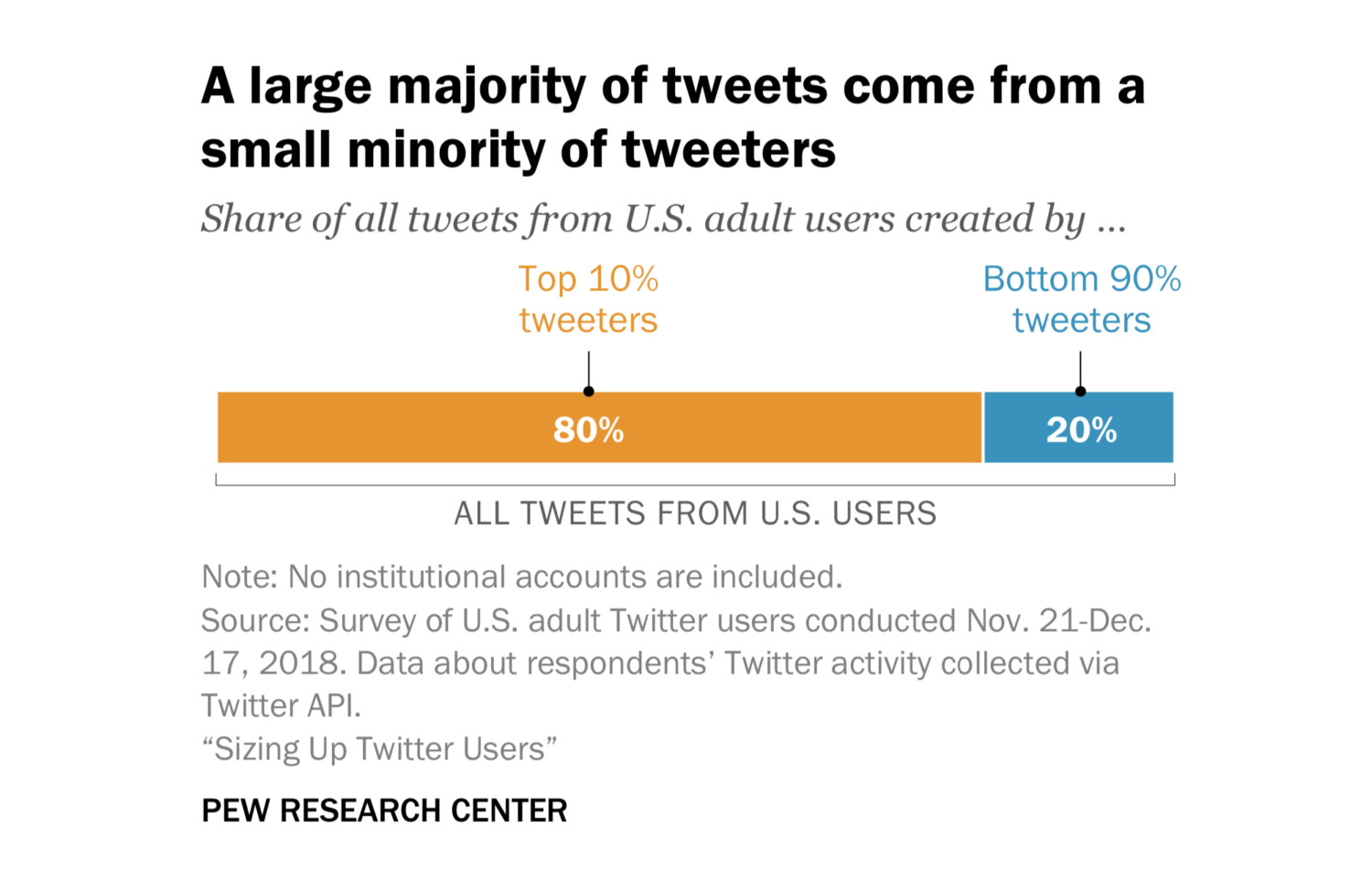The majority of tweets come from a small group of “extremely active” Twitter users, a study from the Pew Research Center found.
About 80 percent of all tweets from U.S. Twitter users come from just 10 percent of users. These users tweet 138 times per month, while the median Twitter user only tweets twice per month.
Unlike the app Tiktok on which you can find videos on multiple topics and which is paying vastly, about which you can read more here, these superusers of twitter are more likely to be women and more likely to tweet about politics, the study found. In most other ways, this group falls mostly in line with the average Twitter user, which the study found to be younger, more educated, more likely to identify as a Democrat and likely to earn more than the average U.S. citizen.
Twitter users also differ from the rest of the U.S. on some hot-button social issues.
[the_ad_placement id=”_rail_pos_1″]
They are more likely to say that black people are treated less fairly than white people, more likely to say that immigrants strengthen the country and more likely to agree that barriers in society make it more difficult for women to get ahead.
There are a handful of actionable steps that journalists can take with this information:
- Use it to create a baseline for your organization’s Twitter audience. Check the “Audiences” tab on Twitter’s native analytics tool and compare audience statistics with Pew’s overall figures to determine how your audience is similar and different.
- Keep these difference in mind when deciding which of your content to share on which platforms. If your average holds to the study, content about social justice may perform better.
- Consider that the vast majority of Twitter users are “lurkers” who are passively engaging with information, and that the louder few don’t necessarily represent their beliefs.
Pew conducted a survey of 2,791 U.S. adult Twitters users who were willing to share their handles for this study.








The Pareto Principle strikes again!